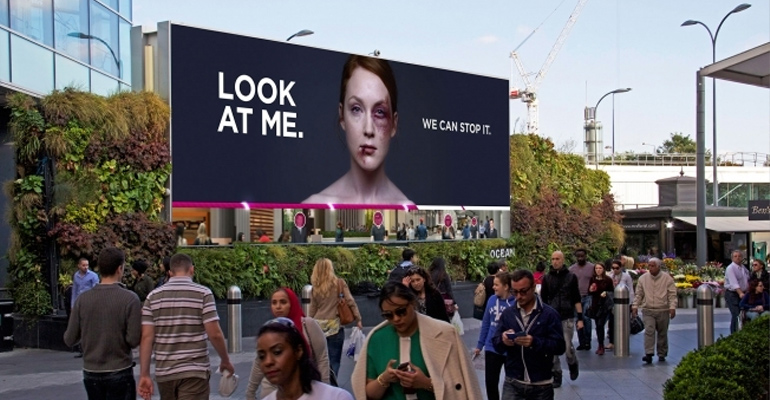Hey there, changemaker! In today’s digital landscape, capturing attention for your nonprofit’s storytelling can feel like chasing butterflies. But fear not, there’s a powerful tool waiting to be unleashed: Infographics! These aren’t just fancy charts – they’re gateways to captivating nonprofit storytelling through impact visualization. We’re talking clear data, stunning design, and stories that resonate with your audience. Intrigued? Buckle up, because we’re about to show you 5 ways infographics can supercharge your nonprofit’s storytelling and transform you into a master of impact visualization.

1. Visualize Your Impact using Infographics
Infographics are a fantastic way to turn complex data into visually engaging and easily digestible content. Whether you’re showcasing the number of lives your organization has positively impacted or illustrating the progress toward a particular goal, infographics make it simple for your audience to understand and remember the information. Nonprofit storytelling often involves large amounts of data, ranging from the number of people served to the specific outcomes achieved. However, presenting raw numbers can be overwhelming and easily overlooked.
Infographics transform these statistics into visual narratives, making the information more accessible and engaging. For instance, consider a nonprofit focused on clean water initiatives. They can use an infographic to show the increase in the number of communities with access to clean water over time. By presenting this data in a visually appealing way, the nonprofit can effectively communicate its impact and inspire confidence in its work.

Furthermore, visualizing impact through infographics helps bridge the gap between data and emotion. People are more likely to connect with a story that is presented visually. Seeing the faces of those impacted, along with key statistics, creates a more compelling narrative that resonates on a personal level. Overall, infographics are an essential tool for nonprofits to communicate their achievements and connect with their audience on a deeper, more emotional level. By turning complex data into visually engaging stories, nonprofits can effectively showcase their impact and inspire action.
2. Nonprofit’s Storytelling: Engage Your Audience
Humans are wired to process visual information quickly. Infographics grab attention and encourage sharing on social media platforms. Use eye-catching colors, icons, and charts to draw people in and keep them engaged with your nonprofit’s story. Nonprofit storytelling can often get lost in a sea of text-based content. With the rise of social media, the competition for attention is fierce. Infographics cut through the noise by offering a visually appealing way to present information. They are more likely to be shared on platforms like Facebook, Twitter, and Instagram, increasing the reach of your nonprofit’s message.

Consider a nonprofit focused on environmental conservation. By creating an infographic that illustrates the reduction in carbon emissions due to their initiatives, the organization can quickly convey its achievements. The use of vibrant colors and clear visuals makes the information stand out in a crowded news feed, encouraging people to stop, read, and share. Moreover, infographics can be tailored to fit different social media platforms. A longer, detailed infographic might work well on a website or in a report, while a shorter, punchier version could be ideal for Instagram stories or Twitter posts. This adaptability ensures that your nonprofit’s storytelling remains effective across various channels.
3. Simplify Complex Concepts
Nonprofits often deal with intricate issues—poverty, climate change, healthcare disparities. Infographics simplify these concepts by breaking them down into bite-sized pieces. Use simple language and clear visuals to convey your message effectively. Nonprofit storytelling can be challenging when addressing complex and multifaceted issues. For instance, explaining the nuances of climate change or the root causes of poverty requires careful communication. Infographics help by distilling these complicated subjects into easily understandable segments.
Imagine a nonprofit working to address healthcare disparities. An infographic can break down the different factors contributing to these disparities, such as economic inequality, lack of access to medical facilities, and educational gaps. By presenting this information visually, the nonprofit can educate its audience without overwhelming them with jargon or lengthy explanations.

Additionally, infographics can use metaphors and analogies to make complex ideas more relatable. For example, a nonprofit focused on food security might compare the distribution of food resources to the branches of a tree, illustrating how each branch supports different aspects of community well-being. This creative approach makes the information more memorable and easier to grasp.
4. Nonprofit’s Storytelling: Showcase Success Stories
Share success stories through infographics. Highlight the journey of an individual or community your nonprofit has helped. Include before-and-after visuals, testimonials, and key statistics. These stories resonate with donors and supporters, inspiring them to take action.
Nonprofit storytelling thrives on personal stories of transformation and success. Infographics provide a powerful way to showcase these narratives. By combining images, text, and data, infographics can create a compelling visual story that highlights the positive outcomes of your nonprofit’s work.
For instance, a nonprofit focused on education can create an infographic featuring the story of a student who has benefited from their programs. The infographic might include a timeline of the student’s journey, from struggling in school to achieving academic success, supported by key statistics such as improved grades and graduation rates. Testimonials from the student and their family can add a personal touch, making the story more relatable and impactful.
Moreover, showcasing success stories through infographics helps build trust and credibility. Potential donors and supporters can see the tangible results of their contributions, reinforcing the effectiveness of the nonprofit’s work. This transparency fosters a stronger connection between the nonprofit and its audience, encouraging continued support and engagement.
5. Boost Fundraising Efforts using Infographics
Infographics can be powerful fundraising tools. Create an infographic that shows how donations translate into impact. Visualize the difference each contribution makes—whether it’s providing meals, planting trees, or educating children. Use infographics in your fundraising campaigns to drive donations.
Nonprofit storytelling is crucial in fundraising efforts. Donors want to know that their contributions are making a difference. Infographics provide a clear and compelling way to demonstrate this impact. By visually illustrating how donations are used, nonprofits can build trust and encourage more generous giving.
For example, a nonprofit focused on hunger relief can create an infographic that breaks down the cost of providing meals to those in need. The infographic might show that a $50 donation provides 100 meals, along with images of the meals and the people who receive them. This concrete visualization makes the impact of the donation tangible, motivating potential donors to contribute.
Additionally, infographics can be used to highlight fundraising milestones and goals. By showing progress toward a specific target, such as building a new community center or funding a medical outreach program, nonprofits can create a sense of urgency and encourage immediate action. The visual representation of progress helps donors see the collective impact of their contributions, fostering a sense of community and shared purpose.

In conclusion, infographics are not just about aesthetics; they’re about conveying your nonprofit’s mission, impact, and urgency. Nonprofit storytelling is enhanced through the use of visually engaging and informative infographics, making complex data accessible, engaging audiences, simplifying intricate issues, showcasing success stories, and boosting fundraising efforts. By integrating infographics into your nonprofit’s storytelling strategy, you can effectively communicate your message, inspire action, and drive positive change.
So, grab your data, fire up a user-friendly design tool, and start creating infographics that tell your nonprofit’s story effectively! Remember, the power of infographics lies in their ability to turn information into action, transforming the way your nonprofit connects with its audience and achieves its mission. It is also advisable to consult with experts like Madavi Agency and get your Nonprofit visible.



